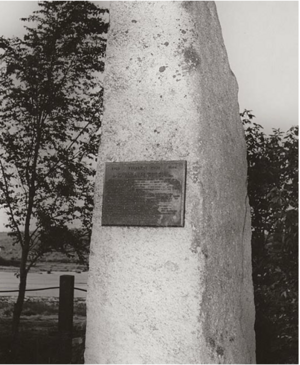Silvanus Cobb facts for kids
Silvanus Cobb (born in Plymouth, New England, in 1709 – died in Havana in 1762) was a brave captain in the Massachusetts army. He later became a naval commander. Cobb fought for the British, mostly in Nova Scotia, during the 1740s and 1750s.
Contents
Cobb's Role in King George's War
During a conflict called King George's War, Silvanus Cobb became a captain. He led a company in a special army group known as "the whaleboat regiment." This name came from the many members who worked in the whaling industry. They also used whaleboats for water missions.
Cobb's group joined the attack on Louisbourg in 1745. They faced many challenges during the siege. Cobb likely took part in these tough battles. Later, he commanded another army company stationed at Fort Anne in Nova Scotia. From 1747 to 1748, he was captain of a small armed ship. This ship helped the British by sailing in the Bay of Fundy. It also moved troops and supplies for other groups like Gorham's Rangers.
Cobb's Actions in Father Le Loutre's War
After the government was set up in Chebucto in 1749, another conflict began. It was called Father Le Loutre's War. Cobb's ship became part of a sea militia led by Captain John Rous. This group helped keep messages and supplies moving along the coast of Nova Scotia and to New England.
Governor Edward Cornwallis praised Cobb. He said Cobb "knows every Harbour and every Creek in the Bay." He also called him "a man fit for any bold enterprise." In August 1750, Cobb was involved in a tense situation at the Saint John River. His ship carried soldiers and supplies to important forts like Fort Anne, Fort Edward, and Fort Lawrence. He also helped protect ships carrying German settlers to found the town of Lunenburg in 1753.
In the winters from 1753 to 1756, Cobb was sent to Chignecto with supplies. He stayed there each spring. Cobb even had a house and farm near Fort Lawrence where he lived with his family.
In April 1755, Cobb found a French ship named Marguerite near Port La Tour. It was full of supplies and guns meant for French troops. He quickly reported this to Halifax. Governor Charles Lawrence ordered Cobb to block the harbor. Cobb then helped Captain William Kensey capture the French ship.
Cobb's Service in the French and Indian War
The French and Indian War was a big conflict. It was part of the larger Seven Years' War. During this time, Cobb helped at the second siege of Louisbourg in 1758. He was chosen by General Monckton to guide James Wolfe on a scouting mission before the fortress was captured. After this, Cobb also took part in the St. John River campaign and the Petitcodiac River campaign.
After the war, Captain Cobb returned home to Plymouth. He then moved with his family to Liverpool, Nova Scotia. He is believed to have built a house there. Before 1755, he also had a house in Chignecto where he sometimes lived in winter. Silvanus Cobb was one of the first people to own land in Liverpool. In 1759, he became a landowner in the new Liverpool township. This area stretched from Cape Sable Island to Port Medway. Cobb helped many of the first settlers move to this new town.
On July 1, 1760, Cobb asked for land to build a house and a dock. His request was approved. His house was built where Wolf Street is today. There is now a park and a monument to Cobb at the spot where his first home stood. He built it with materials he brought from New England.
In 1762, Cobb joined an expedition to Havana. Sadly, he died there from a widespread illness. He wished he had died in battle instead. He left behind a daughter who married Colonel William Freeman. Many of Cobb's descendants still live in Queen's County today. His younger brother, Jabez Cobb, also settled in Liverpool and had many descendants.
Legacy
- Silvanus Cobb Park, Liverpool, Nova Scotia
See also


